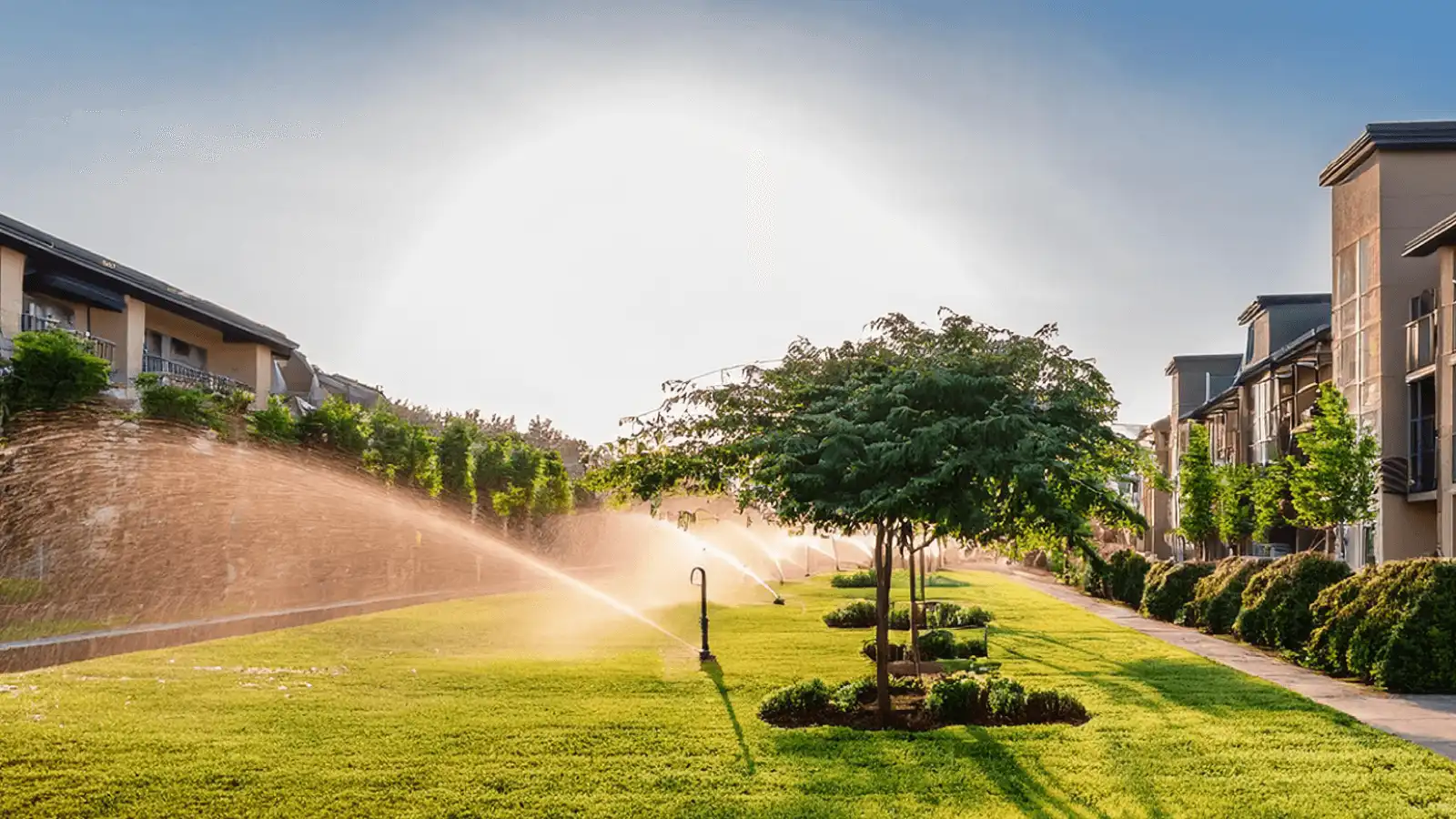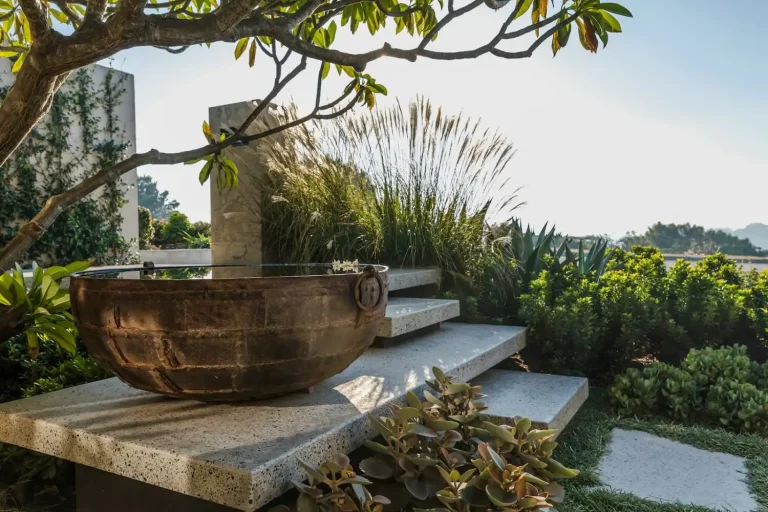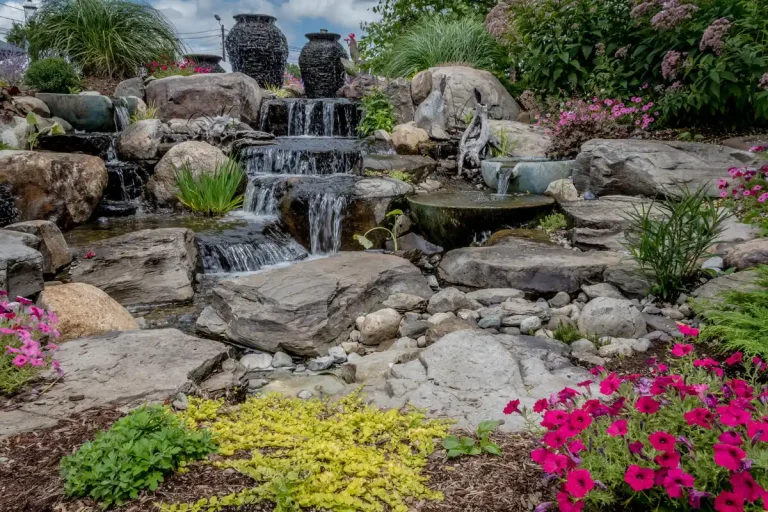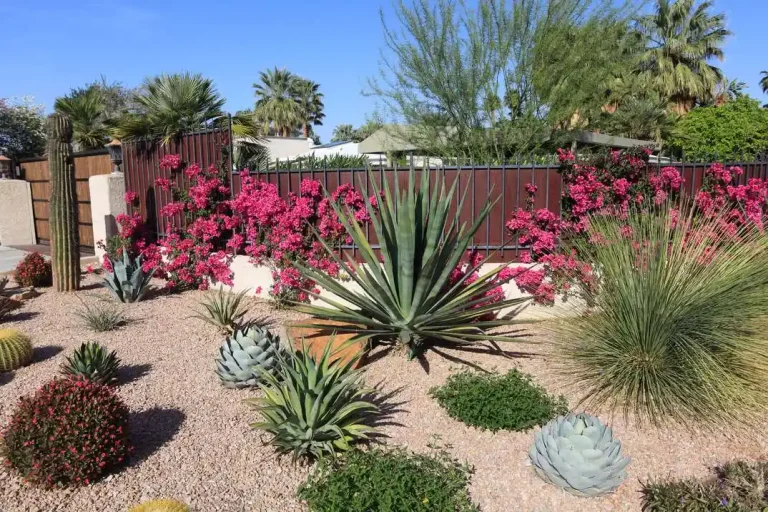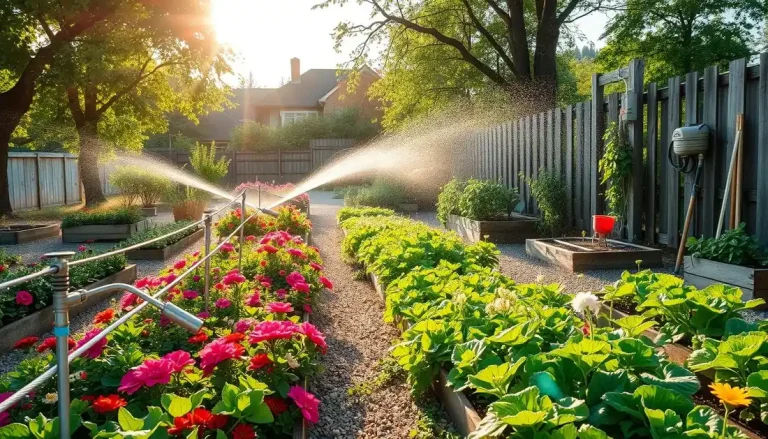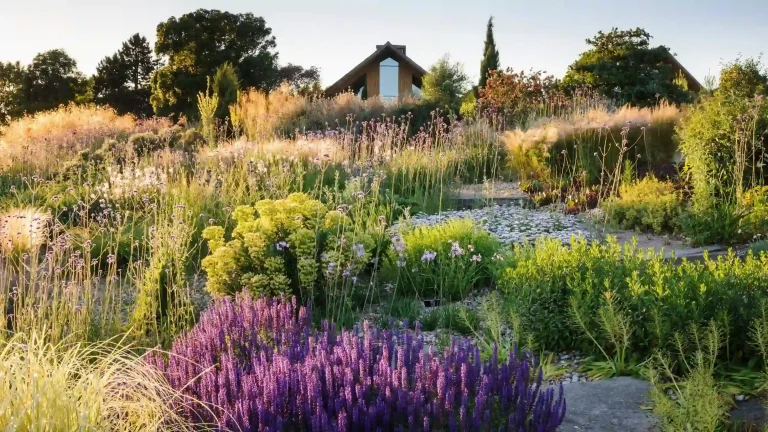High‑End Water Efficient Garden Design: Luxury Irrigation & Smart Landscaping Ideas
Design Principles for a Sophisticated Water‑Efficient Garden
A high‑end water‑efficient garden is not a collection of parts, but an integrated system: soil, plants, hydrology, irrigation, microclimates, and aesthetics all working together. Analyze site conditions such as sun exposure, soil type, slope, drainage, and prevailing winds. Layer design decisions to maximize water retention and minimize waste.
Key strategies include zoning areas by water need (hydrozoning), using permeable paving and contours to slow runoff, integrating rainwater capture, and choosing plants adapted to local climate and low irrigation. In luxury design, also consider visual and sensory appeal: elegant materials, clean lines, focal water elements with recirculating loops, and hidden infrastructure.
Use luxury water‑wise features.
To elevate the garden, integrate premium features that underscore both beauty and efficiency.
Recirculating water features such as fountains, water walls, or rain curtains recycle water in closed loops. Smart irrigation controls and sensors make use of soil moisture data, evapotranspiration, and weather forecasts to adjust watering schedules automatically. Subsurface or textile irrigation systems deliver water directly into the root zone beneath mulch or soil, minimizing evaporation. Additional elements include water storage and rainwater harvesting via cisterns or barrels, and self‑watering planters or wicking beds for containers.
These features, when designed and installed with quality materials and attention to aesthetic detail, maintain the luxury feel while significantly reducing water usage and maintenance.
Benefits of High‑End Water‑Efficient Garden Design
Sustainable resource use and lower water bills
Using smart systems, drip irrigation, and subsurface delivery can reduce water consumption by 30‑70% compared to traditional watering methods. Because premium designs respond to soil moisture, weather, and climate conditions, they avoid unnecessary watering. Over time, utility savings can offset higher initial investments in design and materials.
Rainwater capture and reuse minimize reliance on municipal water supply, especially during drought or under restrictions. This helps alleviate strain on local water infrastructure and reduces environmental impact associated with large‑scale water extraction or treatment.
Enhanced plant health and longevity
Water applied precisely to roots encourages deeper, stronger root systems, improving drought resilience and reducing disease from excess surface moisture. Plants in a well‑designed water‑efficient garden often display more stable growth, better flowering or foliage performance, and higher stress tolerance.
This results in a landscape that retains its appearance, color, and vigor year after year, which is especially important in high‑end or showcase gardens where aesthetic consistency matters.
Aesthetic integration and luxury appeal
Features such as hidden irrigation lines, gracefully designed controllers, sculptural water features, and refined containers all help maintain an upscale look. Water features that recirculate appear luxurious while minimizing waste. Sensors and controllers can be embedded or discretely placed, ensuring they do not detract from the garden’s design.
Such gardens often increase property value, attract admiration, and may adhere to sustainability certifications. The luxury appeal lies not just in ornamentation but in how well visible and invisible components perform together with minimal waste.
Lower maintenance and operational savings
Once premium systems are installed and adjusted, they often require less manual intervention. Smart systems adjust watering schedules automatically, respond to rainfall, and reduce labor for watering and correcting overwatering or plant stress. Maintenance is largely periodic: checking filters, sensors, and seasonal adjustments rather than constant effort.
Over time, these savings in labor, water, and replacement or repair of distressed plants contribute significantly to overall cost‑effectiveness.
Premium Products for Water‑Efficient Garden Design
Below are five real‑world high‑end water‑efficient products suitable for luxury landscaping. Each integrates into a smart, elegant system and helps realize the vision of a high‑end water‑efficient garden.
1. Rachio Smart Hose Timer
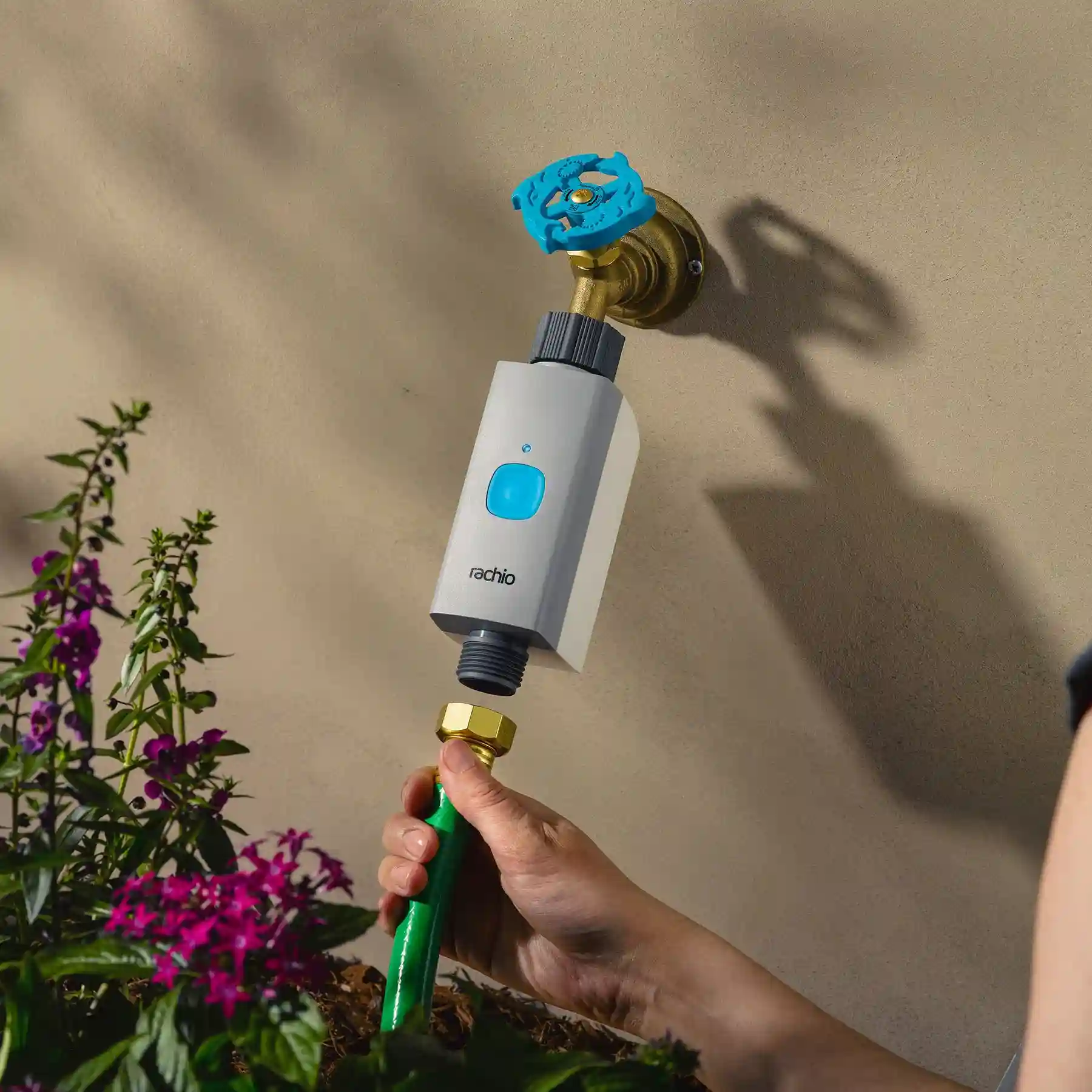
This smart hose timer attaches to a faucet or hose bib and connects via Wi‑Fi to cloud‑based scheduling and weather data. It can automatically skip watering on rainy days, adjust schedules based on local evapotranspiration, and be controlled via smartphone.
Features & benefits:
-
Retrofit solution for existing spaces without redoing underground irrigation.
-
Prevents wasted water during rain or high humidity periods.
-
Allows flexible control for container gardens, guesthouses, or seasonal beds.
-
Remote management via mobile device.
Use in gardens:
Ideal for container zones or flexible garden beds where installing full drip or underground systems is impractical. Provides the luxury of smart control without major infrastructure changes. It supports precision and adaptability in design.
Problem solved:
Eliminates overwatering, reduces utility costs, and improves plant health by watering only when needed. Makes upgrading existing gardens toward higher efficiency more accessible.
2. Orbit B‑Hyve Smart Hose Faucet Timer with Wi‑Fi Hub
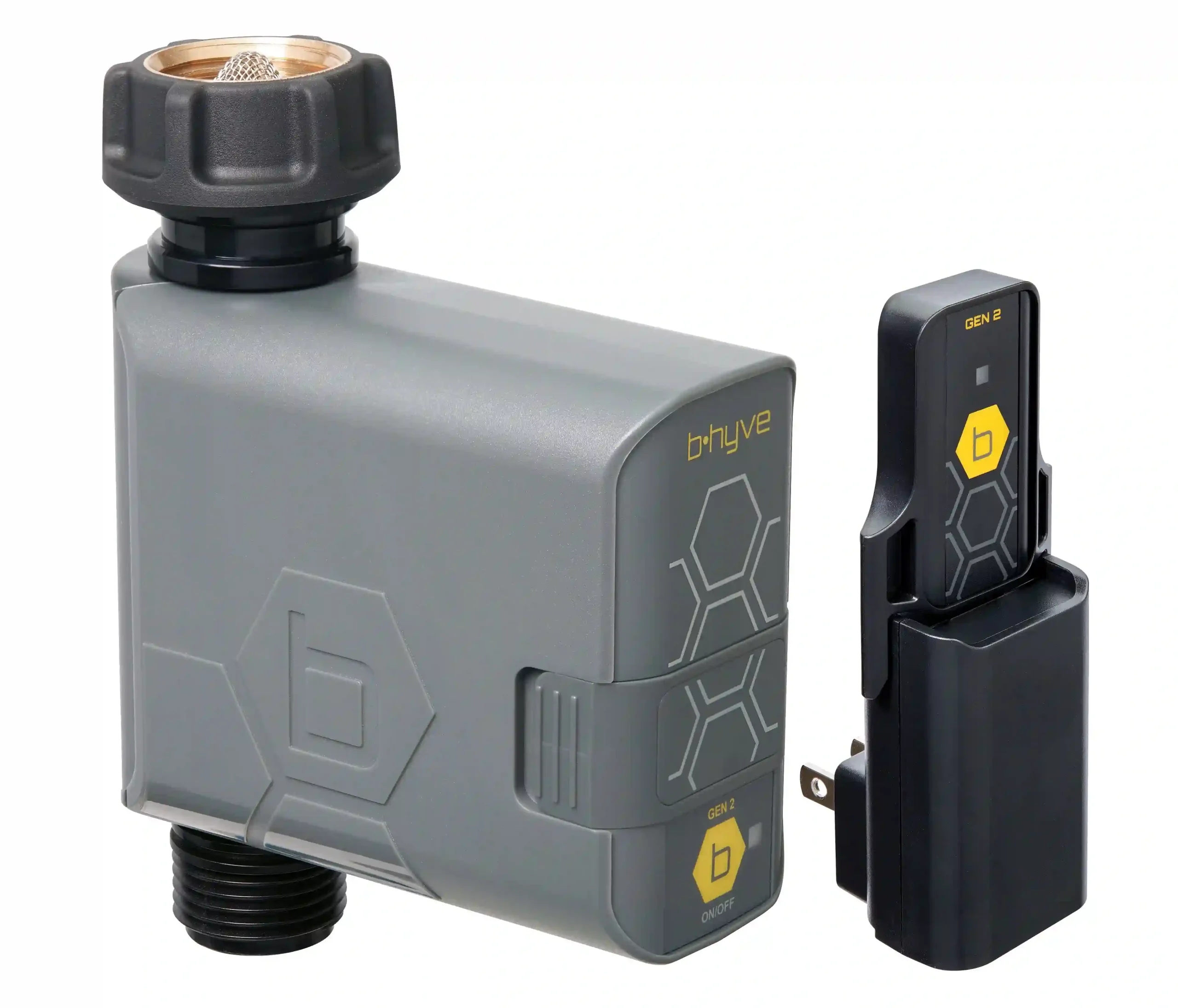
This unit includes built‑in Wi‑Fi and supports remote control and weather‑based scheduling. Designed for households or garden zones that require flexibility and responsiveness.
Features & benefits:
-
Zones can be added or adjusted easily for different garden areas.
-
Weather intelligence avoids watering after rain.
-
Clean design and minimal visible infrastructure.
-
Suitable for drip, micro‑spray, or small sprinkler setups.
Use in gardens:
Works well for patios, urban gardens, or small landscapes. Also good for adding smart control to balcony planters or raised beds. Offers luxury control without large-scale systems.
Problem solved:
Bridges the gap between manual hose watering and fully integrated irrigation systems, giving convenience and precision.
Buy Orbit B‑Hyve Smart Hose Faucet Timer with Wi‑Fi Hub
3. Rain Bird 32ETI Sprinkler Controller System
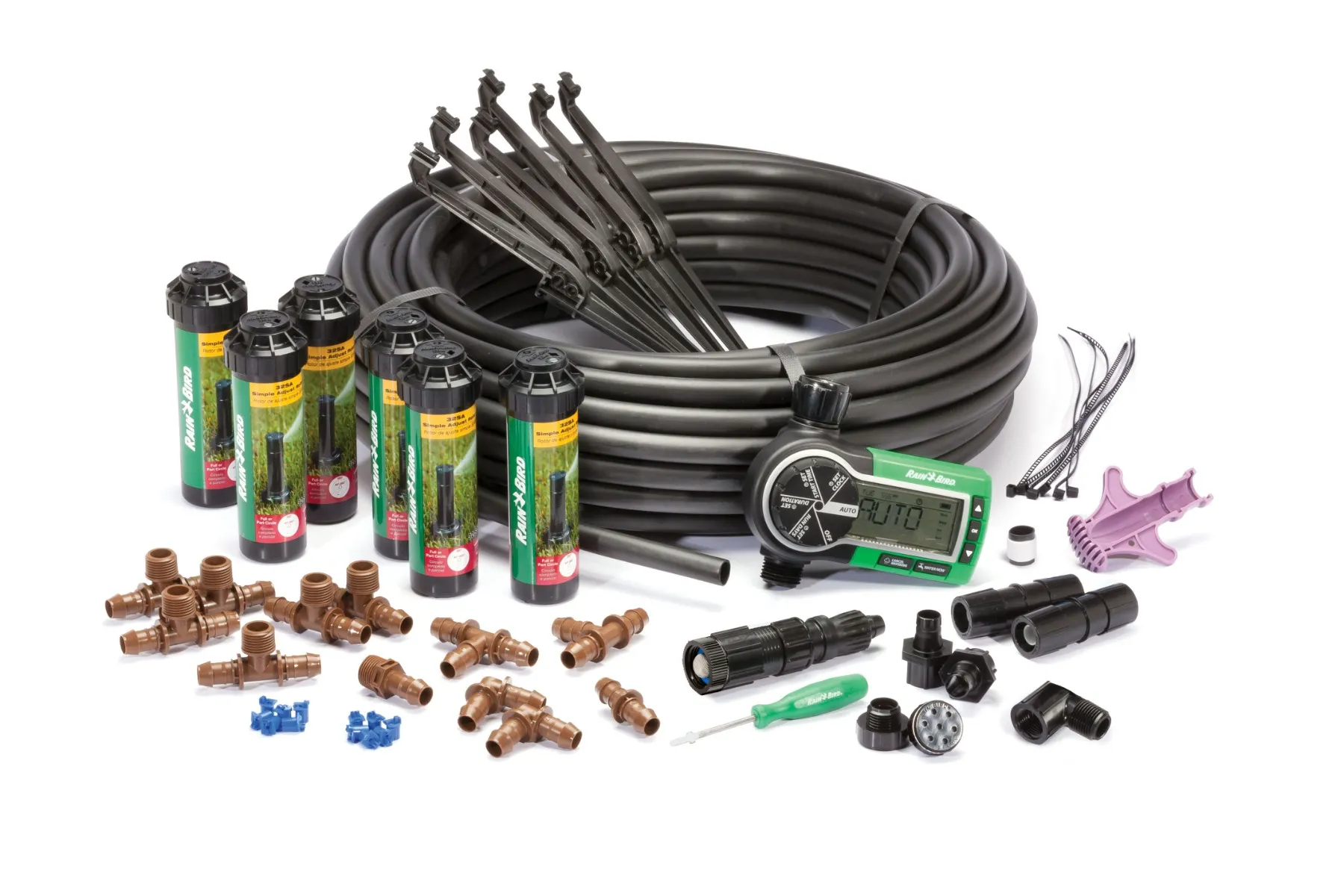
A professional‑grade controller that serves as the brain of advanced irrigation systems. Offers weather adjustments, station scheduling, and compatibility with sensors.
Features & benefits:
-
Centralized management of multiple irrigation zones.
-
Integrates soil moisture sensors and external weather stations to adapt watering schedules.
-
Reliable, durable hardware built for professional landscapes.
-
Seasonal adjustments and remote programming capabilities.
Use in gardens:
Best suited for large estates, commercial properties, or complex gardens with mixed planting zones. It handles drip lines, sprinklers, groundcovers, and specialty beds all under coordinated control.
Problem solved:
Removes waste through overwatering, ensures even distribution, reduces labor and maintenance, and delivers consistent garden health across varied landscapes.
Buy Rain Bird 32ETI Sprinkler System
4. Micro Drip Irrigation Kit
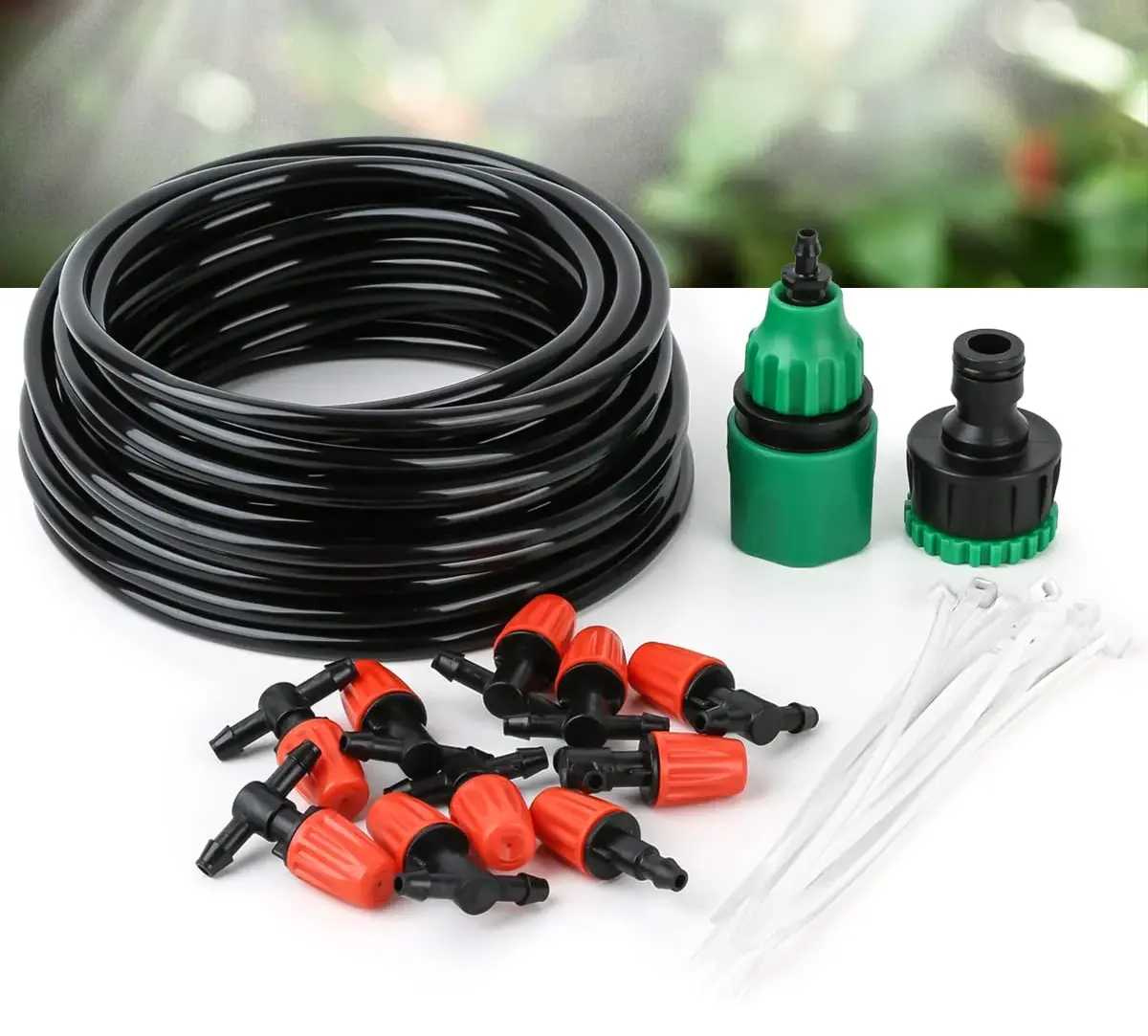
A complete kit with micro‑tubing, emitters, connectors, and valves, designed for precision watering in beds, containers, or mixed landscape areas.
Features & benefits:
-
Delivers water directly to plant roots, minimizing evaporation and wind drift.
-
Can be customized in layout, flow, and emitter type.
-
Scalable and adaptable to garden changes.
-
Hidden installation beneath mulch or ground covers for aesthetics.
Use in gardens:
Ideal for accent beds, flowering borders, edible gardens, and container clusters. Enhances moisture control, especially when combined with sensors or smart timers.
Problem solved:
Replaces inefficient overhead watering, reduces water waste, and improves plant growth by ensuring water reaches root zones directly.
Lakeside Self‑Watering Vegetable Planter Box
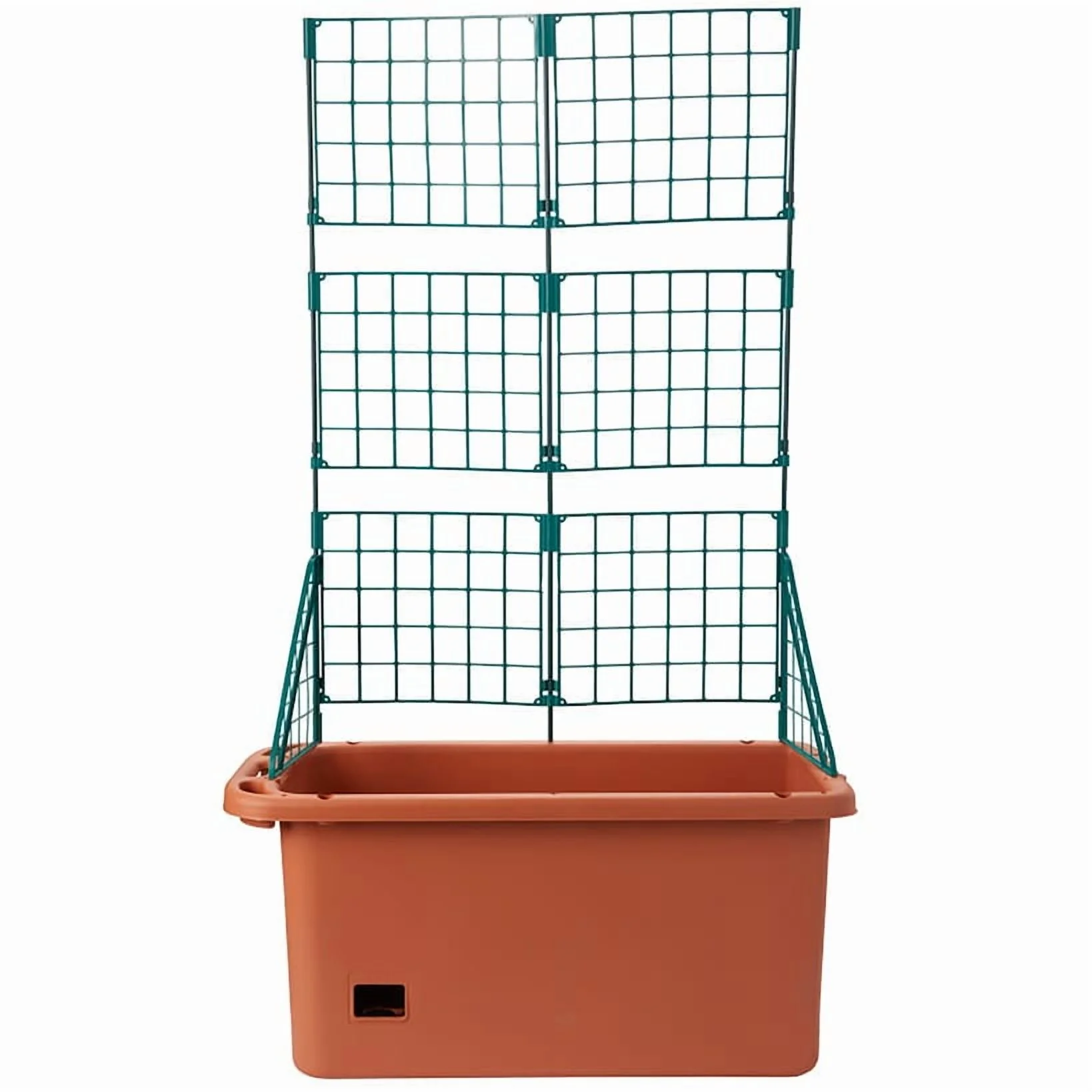
Though designed for vegetables, this planter box with reservoir and wicking action is styled for high-end patios or courtyard gardens. Offers both form and function.
Features & benefits:
-
Internal reservoir holds water to be drawn up by roots as needed.
-
Overflow protection and water level indicator.
-
Trellis and design features for elegance.
-
Reduces watering frequency and improves container plant success.
Use in gardens:
Works well in patio zones, terraces, or as decorative accent pieces. Adds edible or flowering plants where soil beds are unavailable or impractical. Enhances visual and functional richness in tight spaces.
Problem solved:
Mitigates the constant watering demands of container gardening, helps maintain moisture levels, and provides a luxury feel with minimal effort.
Buy Lakeside Self-Watering Planter Box
Use Cases & Problem Solutions
Luxury residential estate with smart irrigation
Problem: Large property with multiple planting zones, some ornamentals, some lawns, some specialty beds. Manual or simplistic timers lead to overwatering or under‑watering, waste, and inconsistent plant health.
Solution: Use a premium controller (such as Rain Bird 32ETI) for central control; integrate soil moisture sensors and weather data. Deploy drip irrigation under mulch, use smart hose timers for flexible zones. Capture rainwater via cisterns. Incorporate recirculating water features for aesthetics without additional water demand.
Why needed: Achieves elegance, precise water use, and reliability, while preserving luxury visuals and reducing waste and cost.
Upscale urban courtyard garden
Problem: Prestigious courtyard needs a lush look, yet water restrictions, visibility of irrigation devices, and limited space make typical systems cumbersome.
Solution: Self‑watering planters (e.g., Lakeside box) for focal plantings. Use micro‑drip under gravel or groundcover to deliver water discreetly. Utilize smart hose timers (like Rachio, B‑Hyve) for container sections. Conceal rain barrels behind decorative elements. Use sensors to avoid watering during overcast or rainy periods.
Why needed: Maintains high aesthetic standards while complying with constraints, reducing visible infrastructure, and minimizing maintenance.
High‑end commercial or hospitality landscaping
Problem: Boutique hotel or resort desires luxurious gardens for guests, but operational costs, water restrictions, and sustainability goals make conventional watering expensive.
Solution: High‑end controller system managing all zones, integrated with sensors. Drip zones for beds, textured surfaces that minimize runoff. Sculptural water features that recycle water. Rainwater or greywater harvesting for supplemental supply. Planters and containers with self‑watering capability for decorative zones.
Why needed: Allows visually stunning landscapes, guest impressions, and sustainable operations while controlling water costs and compliance with environmental regulations.
How to Purchase & Where to Buy
Steps to buying
-
Define garden zones and scope (plant types, sun exposure, space).
-
Choose the type of irrigation/hardware (drip, subsurface, controllers, timers).
-
Select brands with a reputation for durability and service.
-
Estimate required materials (connectors, sensors, tubing, reservoir).
-
Ensure compatibility of all components (voltage, fittings, app interfaces).
-
Plan for installation logistics and aesthetic integration.
Where else to buy
-
Specialty irrigation suppliers and high‑end landscape firms.
-
Authorized dealers for premium brands (Rain Bird, Orbit, etc.).
-
Online garden design marketplaces offering modern smart devices and planters.
-
Local garden showrooms or plant specialists with premium product lines.
Implementation Tips & Best Practices
Phased deployment and testing
Start with core garden zones. Install primary controller, sensors, and drip/automated components in priority areas. Monitor performance for a full growing season before expanding. Adjust watering schedules, sensor thresholds, and layout based on observed feedback.
Calibration & sensor feedback
Place soil moisture sensors at root depths across representative zones. Use sensor data to adjust irrigation scheduling rather than relying on fixed timing. Allow the system to respond dynamically to rainfall, humidity, temperature changes, and plant behavior.
Concealment & aesthetic integration
Use underground or hidden tubing, discreet fixture placement, and integrated rainwater tanks hidden in landscape features. Choose materials and colors for visible components that blend with the garden design. Make technological elements part of design, not afterthoughts.
Maintenance schedule
Regularly clean filters, inspect emitters and valves, flush tubing. Replace worn sensor parts or batteries. Reassess scheduling every season or after major weather changes. Repair or replace faulty components promptly to preserve efficiency.
Water quality & filtration
Especially when using rainwater or reclaimed water, ensure that the water is filtered and free of debris. Use screens or filters at inlets. Prevent algae or sediment buildup, which can clog emitters and reduce system performance.
Frequently Asked Questions
Q1: Can I retrofit a high‑end water‑efficient system into an existing garden without major rework?
Yes. You can add smart controllers or hose timers, replace overhead sprinklers with drip emitters, use self‑watering planters, and integrate sensors. Such incremental upgrades allow for improved efficiency without demolishing landscape features or major hardscape.
Q2: What is a reasonable return on investment for premium garden irrigation products?
Typically, savings come from lowered water bills, reduced plant replacement, and decreased labor. Depending on local water cost and scale of installation, you might recover the initial cost in a few years (2‑5 years) for many systems. High upfront cost is balanced by long‑term performance and sustainability.
Q3: Are these systems practical in regions with both heavy rain and drought periods?
Yes. Smart controllers and sensors enable dynamic response: suspend watering during heavy rain, deliver moisture during drought. Rainwater harvesting and storage help buffer dry periods. The key is designing both for excess and scarcity, and having components that can adapt to shifting environmental conditions.
